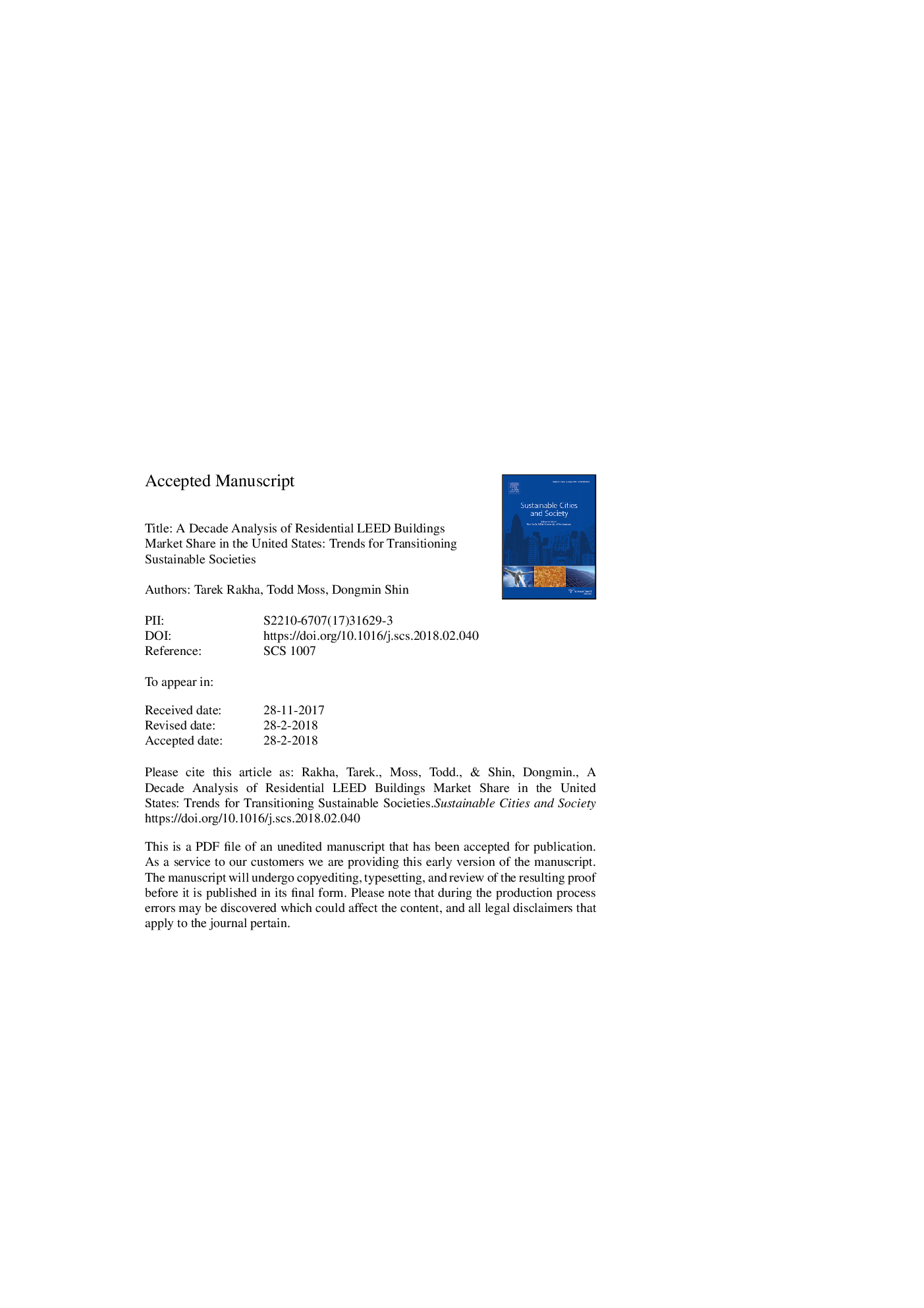| کد مقاله | کد نشریه | سال انتشار | مقاله انگلیسی | نسخه تمام متن |
|---|---|---|---|---|
| 6775417 | 1432009 | 2018 | 21 صفحه PDF | دانلود رایگان |
عنوان انگلیسی مقاله ISI
A decade analysis of residential LEED buildings market share in the United States: Trends for transitioning sustainable societies
دانلود مقاله + سفارش ترجمه
دانلود مقاله ISI انگلیسی
رایگان برای ایرانیان
کلمات کلیدی
موضوعات مرتبط
مهندسی و علوم پایه
مهندسی انرژی
انرژی های تجدید پذیر، توسعه پایدار و محیط زیست
پیش نمایش صفحه اول مقاله

چکیده انگلیسی
Third-party verification and certification processes for low energy built environments have played a critical role in influencing transitioning sustainable societies to reduce their emissions footprint in both residential and commercial buildings. One prominent example is the Leadership in Energy and Environmental Design (LEED) certification program, which was conceived by the United States Green Building Council (USGBC). Its residential platform, LEED for Homes, started as a pilot in 2004 and was fully implemented in 2008. This paper attempts to answer the question: what are the characteristics of growing sustainable LEED residential societies in the United States? The paper examines residential LEED market adoption trends in the United States by analyzing a decade-worth of data from 2005 to 2014 (71,438 certified units). The study implemented data visualization techniques and statistical analyses to explore predictors of residential LEED community adoption trends. The findings suggest that market share of LEED licensed residences in a state and the number of policies and incentives in that state are generally related. Overall market share for LEED Residential had a smaller effect (βâ¯=â¯â0.03 with outliers, 0.11 without outliers) than for LEED for Homes overall (βâ¯=â¯0.06 with outliers, 0.12 without outliers). A significant positive relationship between LEED residential market share and number of LEED AP per capita was also found. The strongest relationship in this subset of variables was with LEED for Homes single-family homes, where one standard deviation increase in LEED AP per capita in year t was associated with a 0.15 standard deviation increase in market share in year tâ¯+â¯1. LEED Residential market share was not generally related to educational attainment, median household income, or political orientation (democrat vs. republican). The investigation proposes further research, specifically as related to local practice support as mechanisms of growing the transition to low-carbon societies.
ناشر
Database: Elsevier - ScienceDirect (ساینس دایرکت)
Journal: Sustainable Cities and Society - Volume 39, May 2018, Pages 568-577
Journal: Sustainable Cities and Society - Volume 39, May 2018, Pages 568-577
نویسندگان
Tarek Rakha, Todd W. Moss, Dongmin Shin,